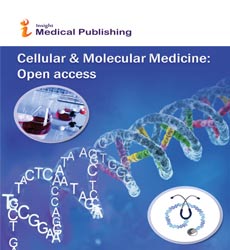Abstract
Laser Ablation Inductively Coupled Plasma Mass Spectrometry in Biomedicine and Clinical Diagnosis
Background: Toxic metal accumulation in the body that may be caused by inherited disorders, chronic intake, or acute intoxication. Vice versa, inadequate daily supply with a specific trace element results in shortcomings and manifests in clinical symptoms. In diagnostics, the determination of exact metal concentrations or the measurement of proteins correlating with the concentration of a specific metal is widespread. In addition, several histopathological stains are available, allowing identification of specific metal deposits in tissue. The introduction of novel metal imaging techniques has extended the repertoire of analytical possibilities. In particular, laser ablation inductively coupled plasma mass spectrometry (LA-ICPMS) has undergone an intensive progress in recent years. It has multi-element capability, granting the analysis of a large variety of biological materials with high spatial resolution. It further can identify and quantitate a large number of metals and metalloids at extremely low concentrations. Methods and findings: We here optimized and extended previous studies in which we used LA-ICP-MS for trace metal imaging in livers and brains of wild type and Atp7b deficient mice that represents an experimental model of human Wilson's disease. We show that the observed alterations in metal content and distribution are closely linked to the progression of the disease. While the accumulation of copper in the brain can be assigned to special regions, the overload with copper is initially distributed uniformly, while the regional distribution of individual metals is significant modulated in necrotic and tumorigenic tissue areas.
Conclusion: These illustrations show that LA-ICP-MS is a highly powerful and innovative analytical technique that will have tremendous impact on biomedical research and diagnostics of metal disorders. Abbreviations: Atp7b: gene encoding a copper-transporting P-type ATPase; EDX: Energy-Dispersive X-ray spectroscopy; LA-ICP-MS: Laser Ablation Inductively Coupled Plasma Mass Spectrometry; LM: Light Microscopic; SIMS: Secondary Ion Mass Spectrometry; SXRF: Synchrotron X-ray Fluorescence.
Author(s):
Ralf Weiskirchen and Ricarda Uerlings
Abstract | Full-Text | PDF
Share this

Google scholar citation report
Citations : 187
Cellular & Molecular Medicine: Open access received 187 citations as per google scholar report
Abstracted/Indexed in
- Google Scholar
- China National Knowledge Infrastructure (CNKI)
- Cosmos IF
- Geneva Foundation for Medical Education and Research
- Secret Search Engine Labs
Open Access Journals
- Aquaculture & Veterinary Science
- Chemistry & Chemical Sciences
- Clinical Sciences
- Engineering
- General Science
- Genetics & Molecular Biology
- Health Care & Nursing
- Immunology & Microbiology
- Materials Science
- Mathematics & Physics
- Medical Sciences
- Neurology & Psychiatry
- Oncology & Cancer Science
- Pharmaceutical Sciences

